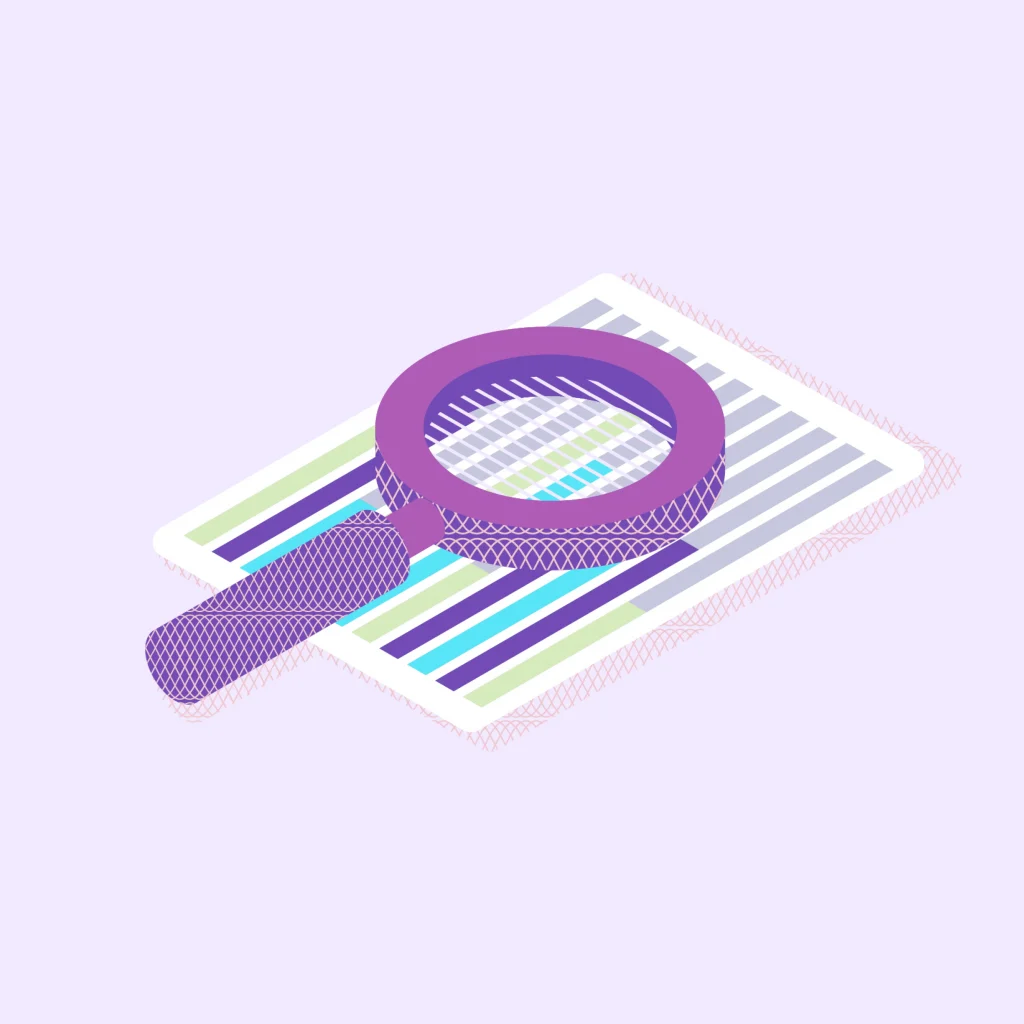
Guest Article. The author’s views are entirely their own and may not always reflect the views of Cowrywise.
As digital trends shape our lives, the attraction of online entrepreneurship grows stronger. Dropshipping, a business model classified by minimal startup costs and streamlined operations, has become a standout choice for many in this digital era.
The real head-turner is the projected growth of this sector: the global dropshipping market, valued at US$ 162,550 million in 2021, is set to soar to an impressive US$ 621,410 million by 2028, marking a CAGR of 20.7% during 2022-2028. This rapid growth underscores the vast opportunities that lie within dropshipping.
This article aims to help you seize these opportunities, providing an in-depth guide to starting and building a successful dropshipping business. Regardless of your experience level — whether you’re an experienced entrepreneur or a fresh face in e-commerce — this step-by-step guide will serve as your GPS on the journey to dropshipping success.
Market Research and Niche Selection

Starting a dropshipping business isn’t a game of luck; it’s a strategic pursuit that begins with market research and niche selection.
- Identifying Target Market and Trends
The cornerstone of any successful e-commerce business is knowing your audience. Who are they? What are their interests? Where are they located? What are their shopping behaviors? Identifying your target market lays the groundwork for your dropshipping venture. You need to stay updated on market trends.
Tools like Google Trends and social media can help spot emerging trends, allowing you to align your product offerings with what’s hot and in demand.
- Analyzing Competition and Market Demand
Dropshipping is a competitive field, making it critical to understand your competition. Look at their products, pricing, and customer feedback. This analysis can reveal gaps in their offerings or service, creating an opportunity for you to shine. Equally important is understanding market demand. Digital tools, like Google Keyword Planner, can help estimate the need for a specific product or niche.
- Choosing a Profitable Niche
The finishing point of your research is selecting a profitable niche. High demand sometimes equates to profitability. Sometimes, niches with massive demand are oversaturated, making it hard to carve out a space.
Aim to find a niche that resonates with you, has a consistent demand, and isn’t swarming with competitors. This strategy helps balance your interests and market viability, setting you on the path to dropshipping success.
Creating a Business Plan

Every successful venture begins with a solid blueprint; that’s your business plan in the business world.
- Setting Clear Goals and Objectives
The first step is establishing clear goals and objectives for your dropshipping business. What do you want to achieve in the first year? What’s your vision for the next five years? Having definitive measurable goals gives your business direction and helps assess your progress.
- Defining Business Structure and Legal Considerations
Next, you need to decide on your business structure. Will you be a sole proprietor or form a limited liability company (LLC)? Each comes with different tax implications and legal protections, so it’s crucial to choose wisely. Also, understand the legal considerations tied to online businesses and dropshipping — from tax registration to complying with consumer protection laws.
- Establishing a Budget and Financial Projections
Let’s talk about money. Start by establishing a budget. This should include everything from initial setup and marketing spending to ongoing operational expenses. Once your budget is in place, prepare financial projections. Implementing effective cost-saving strategies to optimize your operations is highly beneficial in this financial planning process. In the process of establishing a budget and preparing financial projections for your business, it can be advantageous to consider utilizing a business banking app. These apps often provide convenient features and tools to manage finances, monitor transactions, and streamline banking processes.
These are educated guesses about future income and expenses, offering a glimpse into your business’s potential profitability.
Finding Reliable Suppliers

Having a winning product idea and a solid business plan are excellent starts, but the success of your dropshipping business also heavily depends on finding reliable suppliers.
- Researching and Vetting Potential Suppliers
The first step is identifying potential suppliers. A good starting point is conducting an online search, attending trade shows, or using platforms specifically designed for connecting businesses with suppliers. Once you have a list of potential suppliers, it’s time to vet them.
Look for reviews, check their reputation, and consider their experience in the industry. Reach out to them to gauge their responsiveness and customer service quality.
- Evaluating Product Quality and Reliability
Ensuring product quality and reliability is a must in a dropshipping business. Poor-quality products can damage your brand’s reputation and result in customer dissatisfaction. Request samples from your potential suppliers and inspect them meticulously. Also, consider the supplier’s ability to consistently deliver products on time, as delays can lead to customer dissatisfaction and negative reviews.
- Negotiating Favorable Terms and Pricing
It’s time to negotiate terms and pricing once you’ve found a reliable supplier with quality products. Remember, the cheaper you can source your products, the higher your potential profit margins. However, keeping quality for cost and striking a balance is critical.
Building an E-commerce Website

Ready to bring your online store to life? The first step towards this is setting up your e-commerce website.
- Selecting a Suitable Platform
The right platform is similar to choosing the ideal location for your brick-and-mortar shop, and it needs to resonate with your business model and address your specific requirements.
If you’re leaning towards a comprehensive solution that’s easy to use and packed with solid dropshipping features, Shopify is a good pick. But if customization is your thing and you’re comfortable with a bit of tech-speak, WooCommerce could be a better match. Aim to balance your budget, technical skills, and business needs.
- Designing a User-Friendly Website
Now comes the fun part — designing your website. It should be visually pleasing and easy to navigate, echoing your brand ethos, and offer a seamless shopping experience for your customers. You should work with straightforward and intuitive design, with products that are easy to locate and a checkout process that’s as fluid as possible. If the design differs from your forte, consider roping in professional help.
- Optimizing for Search Engines and Mobile Accessibility
Ensure your website is easily discoverable and mobile-friendly. A well-planned SEO strategy can boost your organic traffic from search engines. Start an ecommerce link building campaign, incorporate relevant keywords, optimize your images, and curate engaging content.
Remember, nowadays, mobile shopping isn’t a luxury; it’s a necessity. Your website should be as navigable on a smartphone as on a desktop.
Product Selection and Catalog Management

Your online store is ready, but what will you fill your digital shelves with? Let’s dive into the critical task of product selection and catalog management.
- Identifying Best-Selling Products
Your first task is to discover what products will fly off the shelves. This requires a deep dive into market research, current trends, and understanding your target audience’s preferences.
Look at what’s hot in your chosen niche, but also consider the longevity of the product’s appeal. You want items that will sell well, not just today but also in the future.
- Curating a Diverse and Appealing Product Catalog
Once you know what’s likely to sell, it’s time to curate a product catalog to draw customers in. Variety is key here, and a diverse range of products not only meets the varied needs of your customers but also keeps them engaged. While curating, remember quality over quantity. Every product you list should align with your brand and meet the high standards your customers expect.
- Managing Inventory and Stock Levels
In dropshipping, keeping tabs on your supplier’s inventory is crucial even though you don’t physically handle the stock. Nothing frustrates customers more than finding their desired product out of stock. Regularly sync with your suppliers, update product availability, and plan for contingencies.
Marketing and Customer Acquisition

A beautiful online store filled with unique products is just half the equation. Now, let’s talk about attracting visitors and turning them into customers.
- Developing a Comprehensive Marketing Strategy
The heart of your customer acquisition effort is a well-thought-out marketing strategy. This should be a blueprint for reaching and attracting your target audience, and it should cover everything from SEO to email marketing, content creation, and beyond. Remember, your strategy should be flexible, ready to evolve with changing trends and market dynamics.
- Utilizing Social Media and Online Advertising
Social media isn’t just for sharing cat videos; it’s a potent tool to reach potential customers. Choose platforms where your target audience hangs out and engage them with quality content. Online advertising, like Google Ads, aligned with ads on TikTok or Facebook can also significantly boost your business. Ensure your ads are targeted and compelling, drawing people to your store.
- Building Relationships with Influencers and Affiliates
Influencer and affiliate marketing can supercharge your customer acquisition. Influencers can help you tap into their large, engaged audience, while affiliates can drive traffic and sales in exchange for a commission. It’s about building mutually beneficial relationships. Find influencers and affiliates who align with your brand and can connect your products with their followers.
Order Fulfillment and Customer Service

Next, tackle a fundamental piece of your dropshipping puzzle — order fulfillment and customer service. Remember, your customers are the heart of your business, and keeping them satisfied should always top your priority list.
- Streamlining Order Processing and Fulfillment
As the orders start piling up, having a streamlined fulfillment process becomes crucial. This involves ensuring the right product gets to the right customer as swiftly as possible. A significant part of this is linking up with reliable fulfillment companies, and these partners can manage these tasks efficiently, freeing you up to concentrate on growing your business.
- Providing Prompt and Reliable Shipping
In the shipping game, speed and trustworthiness are non-negotiable. Modern customers expect their orders to land on their doorstep promptly, and any setbacks can lead to frustration. Therefore, working with shipping providers, you can trust to deliver on their promises is essential. Always offer tracking information to your customers, informing them about their order status.
- Offering Excellent Customer Support
Last but not least is the importance of top-tier customer service. Customers appreciate businesses that are quick to respond, ready to help, and empathetic to their concerns. Make it your mission to be accessible to answer questions, solve problems, and even handle returns when necessary.
Provide support through various channels, be it email, phone, or social media. A happy customer is loyal and potentially a powerful advocate for your brand.
Analyzing and Optimizing Performance

Finally, we land on critically analyzing and optimizing your dropshipping business’s performance. This continual cycle of monitoring, exploring, and implementing change separates the thriving companies from the struggling ones.
- Monitoring Key Performance Indicators (KPIs)
First things first, you need to keep a watchful eye on your Key Performance Indicators (KPIs). These are metrics that directly indicate the health and success of your business. They could range from sales numbers, customer acquisition costs, average order value, and lifetime value. Remember, what gets measured gets managed, so ensure you track your business’s KPIs.
- Analyzing Sales Data and Customer Feedback
Next, dive deeper into your sales data and customer feedback. Both are treasure troves of insights waiting to be discovered. Are there particular products that are selling, like hotcakes? Or certain ones that are falling flat? What are your customers saying about their shopping experience? These insights can guide you toward what’s working and what needs tweaking.
- Implementing Improvements and Growth Strategies
Finally, armed with data and insights, it’s time to make some moves. This might involve tweaking your marketing strategy, sourcing different products, or improving your customer service approach. Remember, the goal here is to optimize and grow continually. It’s okay to make mistakes as long as you learn from them and keep moving forward.
Scaling and Expansion

Now that you’ve established your dropshipping business, it’s time to scale up and expand. This stage involves leveraging your successes, learning from your experiences, and pushing your boundaries to achieve greater heights.
- Increasing Product Offerings and Market Reach
First off, consider diversifying your product offerings. Use your sales data and customer feedback to identify potential new products that align with your brand and are likely to resonate with your audience. Expanding your product range can attract a broader customer base and boost sales.
Simultaneously, look at expanding your market reach. Could you sell to customers in a different geographical location? Or is there an untapped demographic that might be interested in your products? Remember, every new market presents a unique opportunity.
- Exploring New Sales Channels and Markets
Make sure to expand yourself to more than just one sales channel. If you sell solely on your website, consider exploring other avenues like Amazon, eBay, or social media platforms. Each channel has its unique audience and can open up new revenue streams.
Additionally, keep an eye on emerging markets. Rapid changes in technology and consumer behavior can create fresh opportunities for your business.
- Outsourcing Tasks and Scaling Operations
As you scale, your operations become more complex, and it becomes impractical to handle everything yourself. This is where outsourcing comes into play. You can hire a virtual assistant to handle customer service or use automated tools for email marketing or inventory management tasks.
Conclusion
Launching a successful dropshipping enterprise requires a keen understanding of the market, careful planning, and an unwavering dedication to customer satisfaction. While the process might initially seem complex, you will find that with each step you take, your confidence and skills will grow. The key is to remain open to learning, adaptable to change, and willing to take thoughtful risks.
If this guide has benefited you, we encourage you to share it with your colleagues and associates who may also be interested in the rewarding world of dropshipping. By sharing this knowledge, we can all contribute to a more vibrant and successful entrepreneurial landscape.
About Jake Tillings —
Jake Tillings, known as “The HR Guy,” is a seasoned HR professional with over a decade of experience. He’s an expert in talent acquisition, leadership development, and organizational culture. Jake is also an accomplished author and a sought-after speaker at global events. He’s affiliated with professional associations like SHRM, APA, and ICF, staying current with the latest HR trends and best practices.
ALSO READ
6 Ways to Save Money in Your Business
Can You Invest Your Business Money In Stocks?
How to Make Money on Your Phone
Is Affiliate Marketing a Scam?
Cash Flow Management for Startups and Hyper-growth Companies
